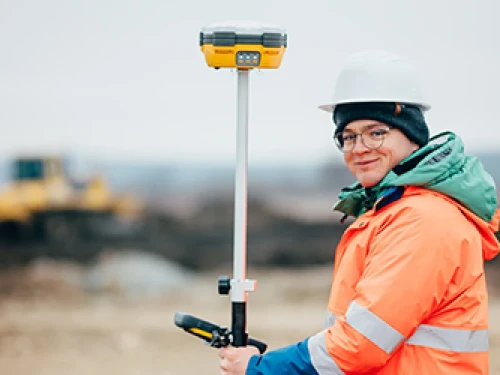Career
Explore career opportunities and educational insights with Kent State’s blogs. Discover inspiring faculty profiles, cutting-edge programs, and career guidance across fields like education, public health, technology, and more. Learn how Kent State’s programs prepare students for impactful careers through expert knowledge and innovative approaches.
Related Blog Posts
CAD, or computer-aided design and drafting (CADD), is a technology for design and technical documentation, which replaces manual drafting with an automated process.
A degree in liberal studies allows you to translate skills and interests to match the career you want to make.
Before you commit to an advanced degree such as a master’s of public administration, it’s important to consider whether it will be worth the investment of your time and money. For some people, an MPA program can be a life-changing experience that prepares them for professional success and greater personal fulfillment. For others, an MPA may not be the right choice.
As noted elsewhere on this site, “Broadly speaking, the public sector refers to any part of a state or national economy that is tied to public programs or services and is controlled by the government.” You may find public sector employment opportunities in the military, law enforcement, organizations managing infrastructure (public roads, bridges, tunnels, water supply, sewers, electrical grids, telecommunications, and so on), departments of public transit or public education, and in healthcare and the government itself.
Environmental education connects us with the world. It enhances the community you live in. It empowers you and those around you. Kent State University strives to enhance the quality of life in your region, your state, and your community.1
The world of tech can seem daunting. What jobs are there? And what’s the right job for me? Consider a degree in information technology (IT).
Now, more than ever, the U.S. justice system needs skilled law enforcement officers to assist in protecting the innocent, keeping the peace and achieving the ends of justice. From lawyers and secret agents to forensic analysts and probation officers, there are many high-paying jobs within law enforcement. According to the Bureau of Labor Statistics (BLS), the median criminal justice degree salary in 2019 was around $81,820.1
Professional nurses are in great demand!
You’re tech-savvy and fascinated by geography, but is there a career in that? Consider this, from the geographic information system company Esri:
Whether you thrive in the sunshine or the snow, near water or mountains, in big cities or under big sky, we have good news for you: there are geographic information science jobs all over the country.
Many companies hire MPA graduates knowing that the skills they’ve acquired are as valuable in the for-profit sector as they are in the government and not-for-profit worlds. Among the many companies likely to hire MPA graduates, these 10 stand out.
Responsive Web Design (RWD) is the approach that suggests that website design and development should enable each site to respond automatically to a user’s behavior and environment—that is, whether that person is using a laptop, iPad, Android phone or other device, viewing in portrait or landscape mode, and so on.1 In the case of public displays, recent work also considers the viewer’s distance from the screen within the context of RWD.2
User Experience (UX) designers are highly sought after in a wide array of industries, from computer and software companies such as Apple, Microsoft and Adobe to popular websites such as LinkedIn, Google and Amazon. You can enjoy a highly paid career with an investment company, major retailer or entertainment firm.
Technology has changed almost every aspect of the way we live and work, including our approach to healthcare. Medical providers, clinical facilities and payers are increasingly adopting technology that can help them achieve the goals of higher-quality care at lower cost. Health informatics is a rapidly growing field, fusing the knowledge of technology with the desire to improve patient care. As the field grows, a competitive health informatics salary can be part of a fulfilling career.
Today’s criminal justice system faces unique challenges that demand highly trained, dedicated professionals. In the area of criminal justice policy, there are exciting careers in community policing and enforcement, the treatment and rights of victims in the criminal justice process, and current issues and practices in homeland security and cybersecurity. These specializations offer many opportunities for rewarding, well-compensated careers that are in high demand. For example, job opportunities for private detectives and investigators are projected to grow by eight percent by 2029, while those for information security analysts will grow by 31 percent.1,2
Intrigued by thoughts of international security jobs? Many people have built top-level, lucrative careers with government agencies, non-governmental organizations (NGOs), private contractors, foundations and think tanks.1
Careers in government and public administration often attracts idealistic people who want to make a difference in our democracy and in the lives of their fellow citizens. But what does it actually take to become a leader in bureaucratic structures at the municipal, state and federal levels?
User experience design (UXD) lets you use your creativity, research skills and technological expertise to shape how others view the world. If you want to excel at building your UX resume, be prepared to impress employers with new ways to solve problems. You also need a skill set that’s grounded in UX fundamentals, yet shows synergistic capability.
There are many reasons to choose to pursue a career in the public sector rather than in the business world. Often, people are drawn to public or nonprofit careers because doing so gives them an opportunity to do good and enact change for the better, rather than just increasing profits for a corporation. But even if you know you want to work in government or at a nonprofit organization, the exact path you follow can vary greatly.
If you enjoy leading others, improving systems, overcoming complex challenges and helping shape the direction of a business or organization, you might be a good candidate for the role of director of administration.
“What does a public administration salary look like?” The path to public good is a personal one, but odds are nearly every person entering the field wonders what kind of salary they can expect. When you think about public administration your mind may automatically drift toward thoughts of government and nonprofit roles, but there are lucrative roles in the private sector as well. What you do with your degree and experience is entirely up to you. You could find roles in government service, nonprofit organizations, or the private and public sectors. Below, we’ll explore roles in each of these categories and discuss the potential public administration salaries for various careers.
Geographic information science (GISc) is a broadly applicable degree that can be used in many fields around the world, including healthcare, climatology, urban development, national parks and more.1 Working in GISc could take you to places as different as a laboratory or the deep wilderness. For example, you might use the skills you have learned to protect the environment, study volcanic activity in other areas of the world, or support the homeless population in your city.2 If you have an analytical mind and are good at visualizing information, you can use GISc technology to tell stories that help others and better understand and serve the world around you in countless different ways.
If you want to understand the world around you — literally — there is no better way than by studying geographical science. This field uses technology to answer important questions about our world: Why are different places the way they are? What is the relationship between people and where they live? How can we best take care of our planet and its unique natural characteristics?1
Many people want to have a meaningful impact on the world, and if you pursue a career in criminal justice, you have the power to do exactly that. So when considering what the best criminal justice jobs are, there’s more to think about than just salary. It’s also important to ask yourself what career you would find most personally fulfilling.
If you’re ambitious, interested in municipal government and hoping to make change in your local community from the top down, the role of city manager may be the perfect career goal for you. It’s an excellent choice for well-organized, diplomacy-minded professionals in public administration.
When life feels unpredictable, most people want a plan for certainty. That’s especially true when it comes to making decisions about careers and weighing the pros and cons of graduate school. While no crystal ball will predict exactly what jobs will exist in the global economy in the years and decades ahead, authorities suggest that lifelong learners will have the advantage in getting hired and promoted.
The growing field of geographic information systems (GIS) has opened up a range of career possibilities for people who are fascinated with data and who want a fulfilling career that addresses pressing real-world problems, and this includes GIS analysts.
One of the best things about working in the public sector is that it gives you many ways to make a difference in your community, no matter what role you fill. You can be confident that you’ll be part of an organization or government body that has the power to change the world (or at least your community) for the better.
The definition of “product designer” as a professional role can be a bit ambiguous. Job titles naturally change over the years as technology and culture change, and because creative professionals such as designers typically want to stand from their peers.1 The title “product designer” is one that has risen in popularity in recent years. Because the job responsibilities of a product designer can overlap those of similar roles such as a user experience (UX) or user interface (UI) designer, even people who work alongside them may not be sure exactly what the job of product designer entails.
Few positions within the field of criminology and criminal justice have as much allure in popular culture today as crime scene investigation (CSI) jobs. Of course CSI careers in reality are not exactly like the versions of them you may see on television; their day-to-day work can be more mundane, and they require serious training and education to do them well. But if you are willing to put in the time and energy to channel your inner David Caruso and pursue a CSI career path, you may find it a creative and rewarding opportunity to work on the cutting edge of law enforcement technology.






























